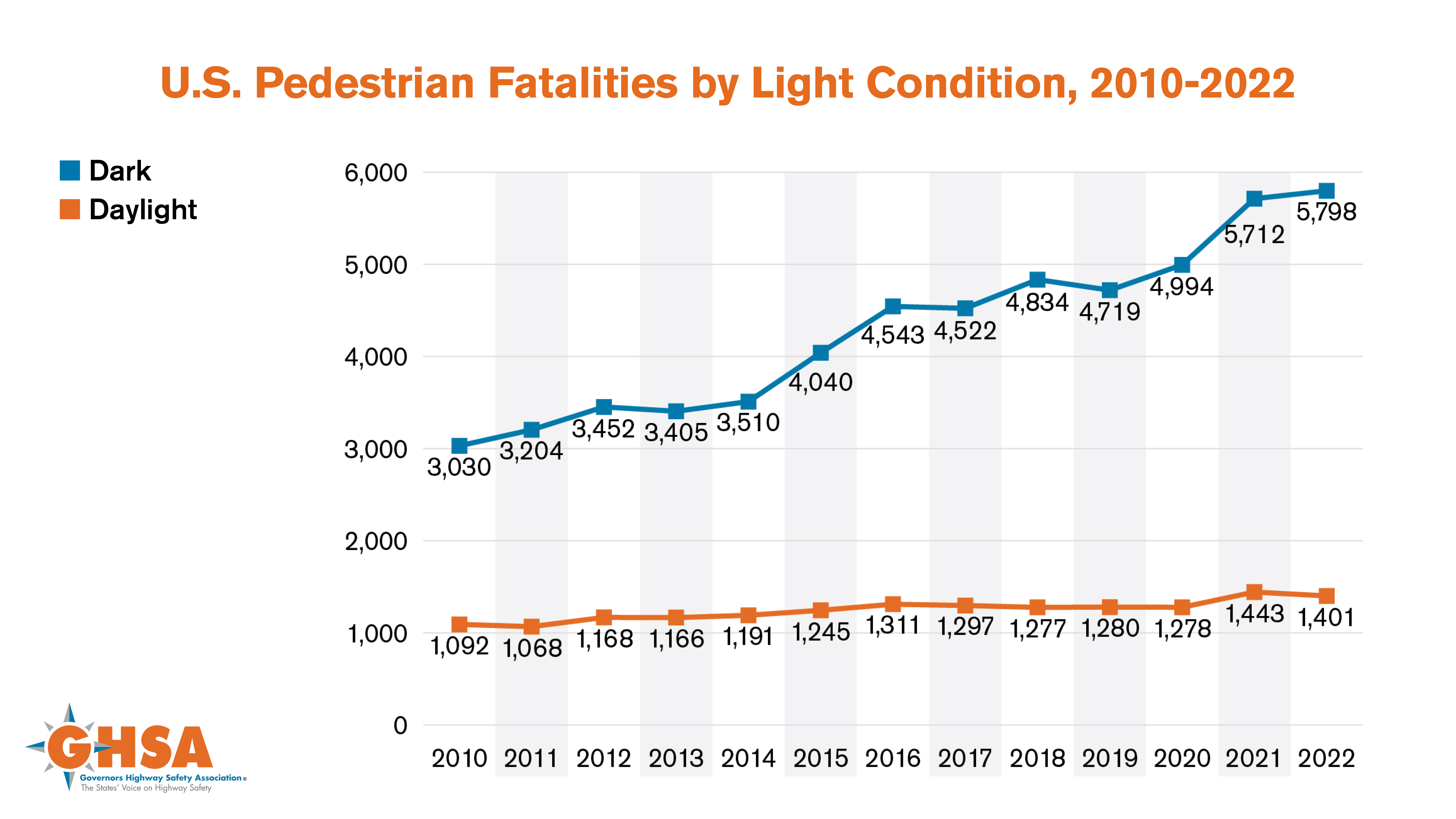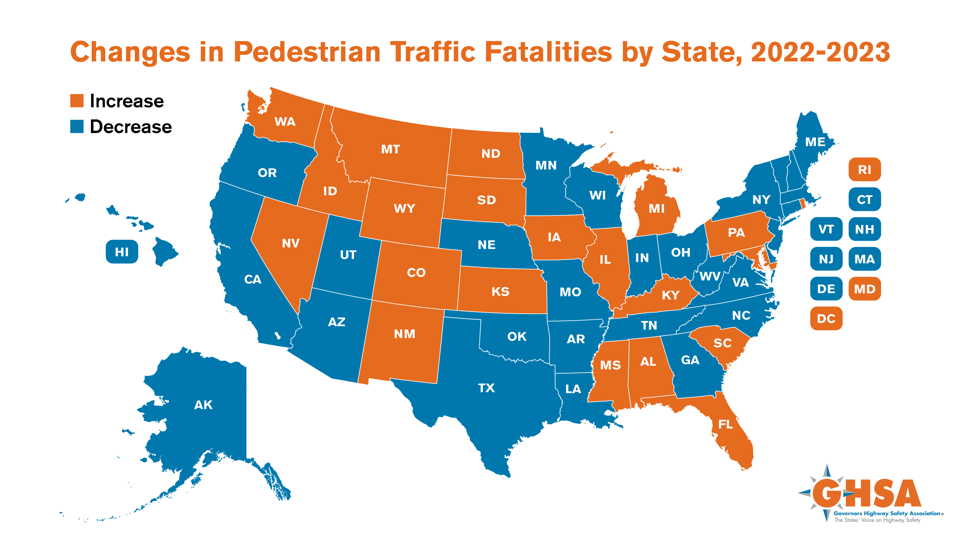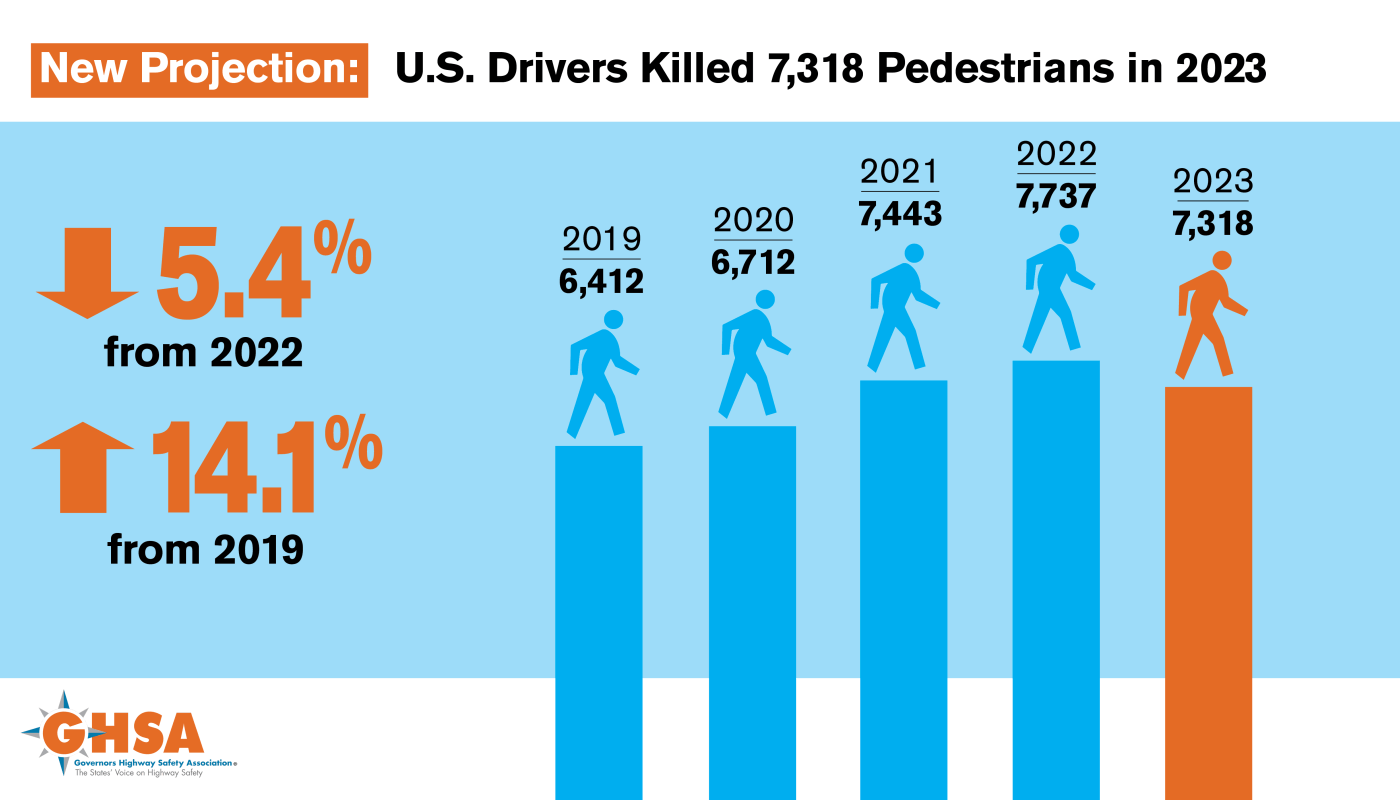A Critical Look at Pedestrian Fatalities: The Urgent Need for Infrastructure and Safety Reforms
In 2023, drivers in the United States struck and killed over 7,300 pedestrians—a tragic figure that translates to an average of 20 pedestrian deaths every day. While this represents a slight decrease from 2022, it remains alarmingly high, particularly when compared to pre-pandemic levels, which were 14% lower. The Governors Highway Safety Association (GHSA) report, “Pedestrian Traffic Fatalities by State: 2023 Preliminary Data,” sheds light on this issue, emphasizing the need for urgent action to reverse this troubling trend.
The Alarming Rise in Pedestrian Fatalities
Pedestrian fatalities have surged dramatically over the past decade, reaching a 40-year high in 2022. The GHSA report identifies several contributing factors to this rise, including dangerous driving behaviors, insufficient infrastructure, and the increasing prevalence of larger vehicles like SUVs and trucks, which pose greater risks to pedestrians. Notably, pedestrian deaths have increased by 77% since 2010, outpacing the rise in overall traffic fatalities.

Some key insights from the report include:
- Nighttime Fatalities: A staggering 78% of pedestrian fatalities in 2022 occurred at night, a figure that has nearly doubled since 2010.
- Lack of Infrastructure: Two-thirds of pedestrian fatalities occurred in areas lacking sidewalks, underscoring the critical need for better pedestrian infrastructure.
- Vehicle Impact: Light trucks, including SUVs and pickups, accounted for 52% of pedestrian deaths in 2022, highlighting the increased danger these vehicles pose to people on foot.
Rectangular Rapid Flashing Beacons (RRFBs): A Vital Tool for Pedestrian Safety
In response to the growing crisis, it is imperative that we invest in infrastructure improvements designed to protect pedestrians. One of the most effective tools available today is the Rectangular Rapid Flashing Beacon (RRFB). These high-visibility, user-activated signals are installed at pedestrian crossings to alert drivers to the presence of pedestrians. RRFBs have been proven to increase driver yield rates, making them a critical component in reducing pedestrian fatalities.
TraffiCalm is leading the charge in the deployment of RRFBs as part of a comprehensive strategy to enhance pedestrian safety. Our RRFB systems are designed to integrate seamlessly with existing traffic infrastructure, offering a cost-effective and efficient solution for improving safety at pedestrian crossings, particularly in high-risk areas such as non-freeway arterial roads where 60% of pedestrian fatalities occurred in 2022.
Moving Forward: A Collaborative Effort for Safer Streets
The GHSA report highlights the urgent need for a multi-faceted approach to pedestrian safety. This includes not only the implementation of advanced infrastructure like RRFBs but also the adoption of vehicles designed with pedestrian protection in mind, lower speed limits in pedestrian-heavy areas, and equitable traffic enforcement.
At TraffiCalm, we believe that by working together with city planners, traffic engineers, and safety advocates, we can make significant strides in reversing the rise in pedestrian fatalities. Our RRFB systems are a key part of this effort, providing a proven solution that enhances visibility and safety for pedestrians at crossings.
For more insights on the state of pedestrian safety and the steps needed to protect lives, you can explore the full GHSA report here: GHSA Pedestrian Traffic Fatalities by State: 2023 Preliminary Data.

Conclusion
Pedestrian safety remains a critical challenge, but it is one that can be addressed through strategic investments in infrastructure and technology. Rectangular Rapid Flashing Beacons (RRFBs) represent a powerful tool in this fight, offering a tangible way to protect pedestrians and reduce fatalities. The time to act is now, and by embracing these solutions, we can ensure that our streets are safer for everyone.
